Developer: Sonic Team Publisher: Sega Release: 08/20/96 Genre: Action
Heading into the 32-bit generation Sonic the Hedgehog was riding a wave of popularity. With Super Mario 64 on the horizon and the PlayStation getting its own mascot in the form of Crash Bandicoot everyone naturally expected Sonic would lead the charge for the Saturn. But it would not happen. Sonic X-Treme went through development hell before its cancellation. Instead Sega turned to Nights, a new property from the famed Sonic Team, to bolster Saturn sales. Ultimately, we know how that story goes but that is not a knock against Nights. Nights Into Dreams is a solid game that deserves some respect.
Nights follows the dreams of two humans: Claris and Eliot. In the world of Nights human dreams reside in two worlds: the world of Nightmares and the peaceful realm of Nightopia. The ruler of Nightmare, Wizeman, has begun stealing the dream energy of everyone to conquer both worlds. This throws Nightopia into chaos. One lone Nightopian named Nights rebels but is imprisoned. But not before finding two children with the attribute of courage needed to help him save his world.
Nights was created with the purpose of recreating the sensation of flying. The game sort of accomplishes that. You do not have free reign to fly around in a full 3d environment. Instead you travel along a set path but can move anywhere within that space. It may sound restrictive (and it is) but that is part of the game’s design.
Each massive level in Nights has four timed paths with a boss battle at the end. The basic objective for each path is simple: collect twenty Ideya or blue orbs to destroy the Idea Capture. Whatever remaining time becomes bonus time where they double any points you gather. Every object you collect creates a link, with a shrinking window to keep the link going. The more links chained the more points scored, with various multipliers strewn about. The purpose is to loop around each path as many times as possible within the remaining time limit to build up points before returning to the Palace for grading. Each path receives a grade with the final tally including your boss time.
It is here where the game’s odd design shows its creativity. If you were to take a cursory glance at any given level it would look chaotic. There are rings, stars, and Ideya scattered seemingly haphazardly. But there is a method to the madness. Every course is laid out in such a way that with skill you can keep chaining links for an entire loop. It isn’t easy of course, but that is why the paths are brief, so you can memorize their layout. Nights takes on an almost shooter quality as you use vacuums and spins to abuse the scoring system to earn high marks. The only weak aspect would be the boss battles. These take place in enclosed areas where it isn’t always immediately obvious what to do. Even worse the camera frequently gets in the way. Honestly I think the game would be better without them.
As much as I like min/maxing the game Nights is a little light on content. Each character has three unique stages with a shared final level. There is definite fun in going back to earn higher grades but there are no rewards. Part of the game’s brevity came down to a lack of time. There were many extras such as new modes, an art gallery, seasonal events, and new stages that did not make it into the final game. All this content was later released for free as Christmas Nights, one of the most generous gifts I can think of. Were all that content included in Nights this would have been an amazing package.
Nights is a very relaxing experience because of its low stakes. There is no real sense of danger as there are few enemies. Even accidentally touching an enemy only results in a 5 second penalty. The biggest threat comes from running out of time but that is easy to avoid. You need a bare minimum C grade to progress which is very easy to attain. The boss battles are more of a case of figuring out the mechanic than presenting any real threat. Some may perceive this as a negative, but I think it works in the game’s favor. Putting the focus on achieving a higher score through skillful play is a lot better than forcing combat in a title that does not need it.
Nights looks fantastic and serves as a technical showpiece for the Saturn. It also has some of the strongest art direction from that era. The mix of beautiful 2d backgrounds combined with 3d objects plays to the system’s strengths. The frame rate is solid and the camera work produces numerous dizzying sights that are breathtaking. Nights also boasts some solid use of light source shading and gouraud shading, effects not prevalent on the Saturn. It has its blemishes; it suffers from heavily pixelation, making it hard to discern what you are looking at. The soundtrack might be more incredible than the visuals, if you can believe it. Each stage theme is fantastic, with the OST spanning a number of genres. There are even vocal themes which are pretty cool for the time.
In Closing
Nights into Dreams may not have been the system seller Sega wanted but is a truly unique game. Easy to pick up but hard to master Nights is still worth revisiting today. While it could have used more content what is here is pretty solid.


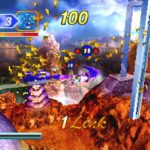
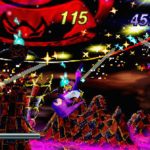
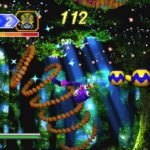


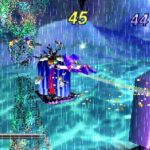
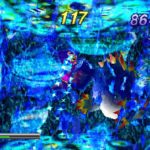
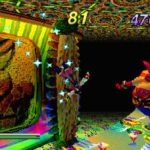
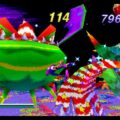
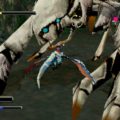
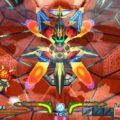
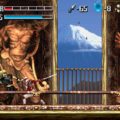
2 thoughts on “Nights into Dreams”